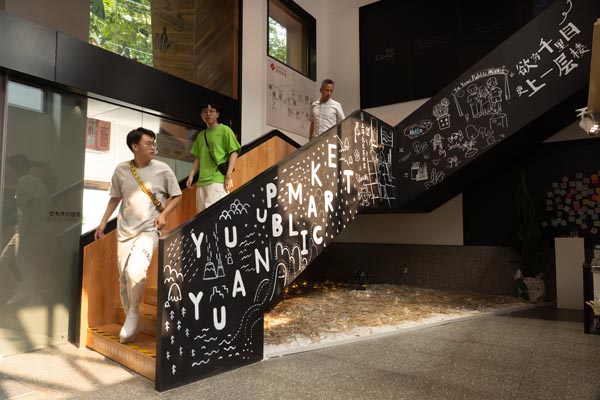 |
|
Painted stairs at Yuyuan public market. [PHOTO BY GAO ERQIANG/CHINA DAILY] |
"There were many security concerns before the restoration. The beams of the houses were unstable and had many holes in them. They looked just like honeycomb. Because the floor and roof of all these homes were made of wood, fire safety was a big issue," Huo says.
"But now these problems have all been solved. Beams were changed and firefighting systems were installed. We also learned how to use a rope to escape from the house in the event of a fire. We really appreciate the efforts our government has taken."
This new focus for urban renewal was officially introduced in 2017, when the Shanghai municipal government issued a guideline aimed at preserving old buildings and improving the living conditions of citizens. According to the municipal government, old residential buildings in Shanghai currently take up 160 million square meters.
"Historical architecture embodies the memories and cultural spirit of a city-they must be protected. The preservation of these old buildings is a way of showing respect for the city's history," says Zhang Jun, an associate professor of sociology at Tongji University, who sits on the advisory board for Shanghai's urban renewal projects.
Just a few minutes walk away from Qishan neighborhood is Hongye Garden, another old community that was built in the 1920s. Here, convenience stores, snack bars, locksmiths, tailors and shoemakers can be found in the newly established community market. Since its opening in February, many visitors have come here to experience the unique local culture and take photos.
"We have always put residents first, frequently consulting with them and then making decisions on the basis of improving their quality of life," says Fang Wen, general manager of Chuangyi Creative Inc, who is responsible for the design and renewal of Yuyuan Road.